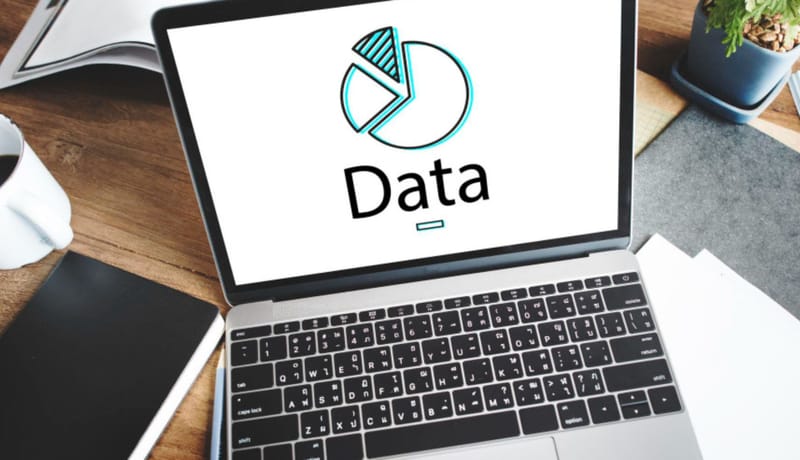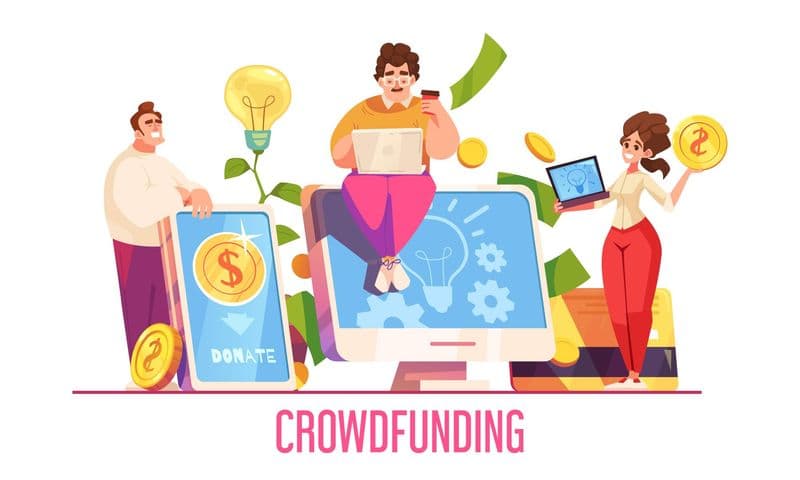
Data is everything when it comes to sales.
If you're in sales, you've probably heard the term "first-party data" thrown around lately.
But what exactly is it, and why is it considered important for your success?
Buckle up, because we're about to dive into why this type of data is not just important but indispensable for sales reps and sales professionals.
Understanding First-Party Data
In simple terms, it is information that your company collects directly from your audience.
This data can come from various sources: your website, app, CRM system, social media channels, surveys, and even customer feedback.
Essentially, it's the data you own and have full control over.
Unlike second-party data (which is someone else's first data that you might purchase or share) or third-party data (which is aggregated from various sources and sold by data providers), first-party data gets collected straight from the source—your customers and prospects.
This makes it highly reliable, relevant, and specific to your business.
Understanding First, Second, Third, and Zero-Party Data
Each type of data—first-party, second-party, third-party, and zero-party—has unique characteristics and uses.
First-Party Data
Since I've discussed this in the previous section, I'll only share the examples here.
Examples
- Website analytics (e.g., page views, time on site)
- Purchase history
- Customer feedback and surveys
- Email subscription lists
- Social media engagement metrics
Why It Matters
First party data is incredibly valuable because it's accurate, relevant, and specific to your business.
Since this is customer data, you can trust its reliability and use it to personalize your marketing efforts, improve customer experiences, and drive sales.
It's also more privacy-compliant since users have directly interacted with your brand and often provided consent.
Second-Party Data
Second-party data is another company's first-party data that you acquire through a direct relationship or partnership.
Essentially, it's someone else's first-party data that you use with their permission.
Examples
- Partner-shared customer insights
- Data exchanges between non-competing brands
- Co-branded campaign data
Why It Matters
Second-party data can expand your audience insights and provide a broader perspective without the uncertainty that often comes with third-party data.
It's particularly useful for forming strategic partnerships where both parties can benefit from shared insights, enhancing targeting accuracy and marketing effectiveness.
Third-Party Data
Third party data is collected by entities that don't have a direct relationship with the consumers it pertains to.
This data is aggregated from various sources and sold by data providers.
Examples
- Demographic and psychographic data from data brokers
- Aggregated behavioural data from various websites
- Purchased audience segments for advertising
Why It Matters
While third-party data helps in scaling marketing efforts by providing access to a wide range of consumer information, it often lacks the accuracy and relevance of first- and second-party data.
Privacy concerns and regulatory changes (like GDPR and CCPA) are making third-party data less reliable and harder to use.
Still, it can be useful for broadening reach and targeting new audiences when used responsibly.
Zero-Party Data
Zero-party data is information that customers intentionally and proactively share with a brand. This data is usually gathered through direct interactions where the customer willingly provides information.
Examples
- Preference centre data (e.g., favourite products, communication preferences)
- Interactive content responses (e.g., quiz results, survey answers)
- Registration details for events or content downloads
Why It Matters
Zero-party data is a goldmine for personalization because it comes directly from the customer with their explicit consent.
It reflects the customer's own stated interests, preferences, and intentions, making it highly valuable for creating targeted marketing campaigns, improving customer experience, and fostering stronger relationships.
On top of that, since customers voluntarily provide this data, it often comes with a higher level of trust and willingness to engage.
Practical Applications in Sales and Marketing
Personalization
First-party and zero-party data are particularly powerful for personalization. For instance, if a customer shares their preferences through a survey (zero-party data) and you combine this with their past purchase history (first-party data), you can create highly tailored marketing messages that resonate more deeply with them.
Audience Expansion
Second-party data can help you reach new audiences that are similar to your existing customers. If you partner with a non-competing brand that targets a similar demographic, you can gain insights into a new set of potential customers and tailor your outreach accordingly.
Broad Targeting
Third-party data can help in reaching a larger audience when trying to build brand awareness or enter new markets.
Despite its drawbacks, it’s useful for campaigns where broad reach is more important than precise targeting.
Building Trust and Compliance
Using first-party and zero-party data helps build trust with your audience because it shows that you respect their privacy and are committed to using their data responsibly.
This is increasingly important in a world where privacy concerns are top of mind for consumers and regulators alike.
The Golden Nugget of Data
First-party data is the golden nugget of the data world.
Why?
Because it’s authentic and trustworthy.
You know exactly where it comes from, and it’s collected with full transparency. In an age where privacy and user consent are under intense scrutiny, first-party data stands out as the ethical choice.
It's like having a direct line to your customers' thoughts, preferences, and behaviours.
Building Trust and Transparency
Let's talk about trust.
Today’s consumers are more privacy-conscious than ever before. They want to know how their data is being used and are increasingly wary of companies that don’t respect their privacy.
By collecting first-party data, you're not only respecting their wishes but also building a foundation of trust.
When customers see that you're using their data to improve their experience genuinely—be it through personalized offers, relevant content, or improved customer service—they’re more likely to stick around.
Trust me, trust is a currency you can't afford to lose in the sales world.
Personalization at Its Best
We live in a world where personalization is no longer a luxury; it’s an expectation.
First-party data is your ticket to delivering personalized experiences that resonate with your audience.
Think about it: when you have detailed information about your customers' preferences, purchase history, and behavior, you can tailor your approach to meet their specific needs.
Imagine walking into a store where the sales rep knows exactly what you’re looking for because they remember your previous visits and purchases.
That’s the kind of personalized experience first-party data enables you to create, but on a digital scale. It’s powerful, and it’s what today’s customers crave.
Improved Customer Retention
Customer retention is the holy grail of sales. Acquiring new customers is great, but retaining existing ones is even better.
First-party data gives you the insights needed to keep your customers happy and coming back for more.
By understanding their likes, dislikes, and behaviors, you can proactively address their needs and concerns.
This could mean anything from sending timely follow-up emails, offering loyalty rewards, or simply providing exceptional customer service based on their past interactions.
It’s all about making them feel valued and understood, which first-party data makes possible.
Data Accuracy: No Room for Guesswork
One of the biggest advantages of first-party data is its accuracy.
Unlike third-party data, which can often be outdated or inaccurate, first-party data is collected in real time and is specific to your audience.
This means you’re making decisions based on actual, up-to-date information rather than assumptions or guesses.
In the fast-paced world of sales, having accurate data is crucial. It allows you to be agile, make informed decisions, and pivot your strategy quickly if needed.
It’s like having a GPS for your sales efforts, guiding you in the right direction with precision.
Cost-Effective and Efficient
Relying on first-party data is not just smart; it’s cost-effective.
Purchasing third-party data can be expensive, and let’s be honest, you’re often paying for a lot of fluff—data that’s not even relevant to your business.
First-party data, on the other hand, is data you’ve already collected. It’s essentially free (beyond the cost of collection and storage), and it’s tailored specifically to your needs.
By utilizing this data, you’re maximizing your resources and ensuring that every marketing dollar is well spent.
You’re not casting a wide net and hoping for the best; you’re targeting your efforts with sniper-like precision.
The Future of Data Privacy
Regulations that intend to protect your data, like GDPR and CCPA, have changed the game.
Companies are now required to be more transparent about how they collect and use data.
This is where first-party data shines. Because it’s collected directly from your audience with their consent, it’s inherently compliant with these regulations.
Future-proofing your sales strategy means embracing first-party data.
As privacy concerns continue to grow and regulations become stricter, having a robust first-party data strategy will ensure you stay ahead of the curve and avoid costly fines and reputational damage.
Also check out our top sales prospecting tools for 2024 prospecting tools for 2024
Creating a Seamless Omnichannel Experience
Customers today interact with brands across multiple channels—websites, social media, email, in-store, and more.
First-party data allows you to create a seamless omnichannel experience by integrating data from all these touchpoints.
You get a holistic view of your customer’s journey, enabling you to provide consistent and cohesive experiences no matter where they interact with your brand.
Let's understand this with an example:
If a customer browses a product on your website and then visits your physical store, you can use the data collected online to enhance their in-store experience.
It’s about creating a unified experience that meets customers where they are and provides value at every step.
Real-World Applications and Success Stories
Let’s bring this to life with some real-world examples. Companies that have successfully leveraged first-party data are reaping the rewards.
Take Netflix, for instance. Their recommendation engine, powered by first-party data, is a huge part of why they’re so successful.
They know what their users like to watch and can suggest content that keeps them engaged.
Or look at Amazon. Their personalized shopping experience, driven by first-party data, is second to none.
They know what you’ve bought and what you’re browsing and can predict what you might want next.
This level of personalization keeps customers coming back and drives sales through the roof.
These companies are not just using first-party data; they’re mastering it. And it’s paying off big time.
Practical Steps to Leverage First-Party Data
So, how do you start leveraging first-party data in your sales efforts? Here are some practical steps:
- Collect Data Wisely: Ensure you’re collecting relevant data at every touchpoint. Use forms, surveys, website analytics, and CRM systems to gather insights.
- Analyze and Segment: Don’t just collect data for the sake of it. Analyze it to find patterns and segment your audience based on behavior, preferences, and demographics.
- Personalize Your Approach: Use the insights gained to personalize your interactions. Tailor your messages, offers, and content to meet the specific needs of each segment.
- Integrate Across Channels: Ensure your data is integrated across all channels to create a seamless omnichannel experience. Use tools that allow for data integration and provide a unified view of your customer.
- Respect Privacy: Always be transparent about how you’re using data and ensure you have the necessary consent. Build trust by showing customers that their data is safe and being used to enhance their experience.
The Future is Data-Driven
As we move forward, the role of data in sales and marketing will only become more critical.
Companies that can effectively leverage first-party data will have a significant competitive advantage.
It’s not just about having data; it’s about using it strategically to drive better results.
First-party data is your secret weapon. It’s accurate, cost-effective, and respects privacy.
It allows you to build trust, personalize experiences, and make informed decisions.
In a world where customers expect more and privacy regulations are tightening, first-party data is the key to staying ahead.
To Sum It Up
If you’re in sales and not leveraging first-party data, you’re missing out on a massive opportunity.
It’s the most reliable, relevant, and ethical data you can use to drive your sales efforts.
By building a strong first-party data strategy, you can create personalized experiences, improve customer retention, and face the future of data privacy with confidence.
Remember, it’s not just about collecting data; it’s about using it wisely.
So, start harnessing the power of first-party data today and watch your sales soar. It’s time to take control of your data and use it to drive your success.




